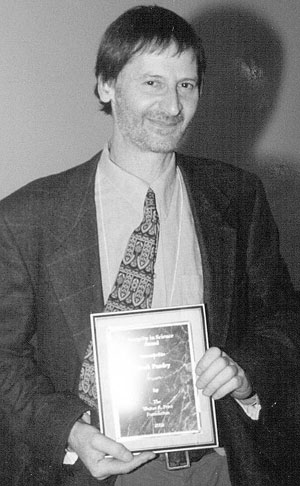Purdey, Mark
Born on Christmas day 1953 to a family of noteable rifle makers, Purdey studied Zoology and Psychology at London University and pioneered an organic farm in his early twenties. His methods, which involved the use of pedigree jersey cows, a self-sufficient arable/legume-grass rotation system and a minimal reliance on concentrated feed, led to high yields.
Purdey had a second highly successful career as a researcher after cows he purchased developed BSE, something his own cows had never suffered from. Purdey’s research led him to challenge the mainstream hypothesis and focus instead on environmental ratios of copper and manganese.
In the year or so before his untimely death, Mark Purdey had become an outspoken critic of the gerrymandering of scientific data relating to clusters of CJD that had become a feature of the mainstream hypothesis, which was, to his frustration, most often disseminated as if it were established fact. In particular, Purdey had begun to focus on the piezoelectric properties of chemicals like Lyddite, which he described as “the common component of the chemical detonators found in the TSE cluster“.
Mark Purdey died of a brain tumour on Sunday 12th November 2006. He is survived by a wife and 8 children.
Born in Much Hadham, Hertfordshire, he was a scion of the famous Purdey family of gunsmiths – a bizarre irony since Mark was incapable of harming any living thing, let alone shooting it.
[Purdey] did not accept the assurances given to him by MAFF and, in 1985, sought a judicial review of the Warble Fly (England and Wales) Order 1982. Following an out-of-court settlement, he was exempted from treating his cattle with OP compounds.
– Extract from the BSE Inquiry

Mark Purdey accepting the Weston A Price Integrity in Science Award 2002
-
Recent
-
Links
-
Archives
- January 2010 (11)
- December 2009 (1)
- November 2009 (9)
- October 2009 (25)
-
Categories
-
RSS
Entries RSS
Comments RSS